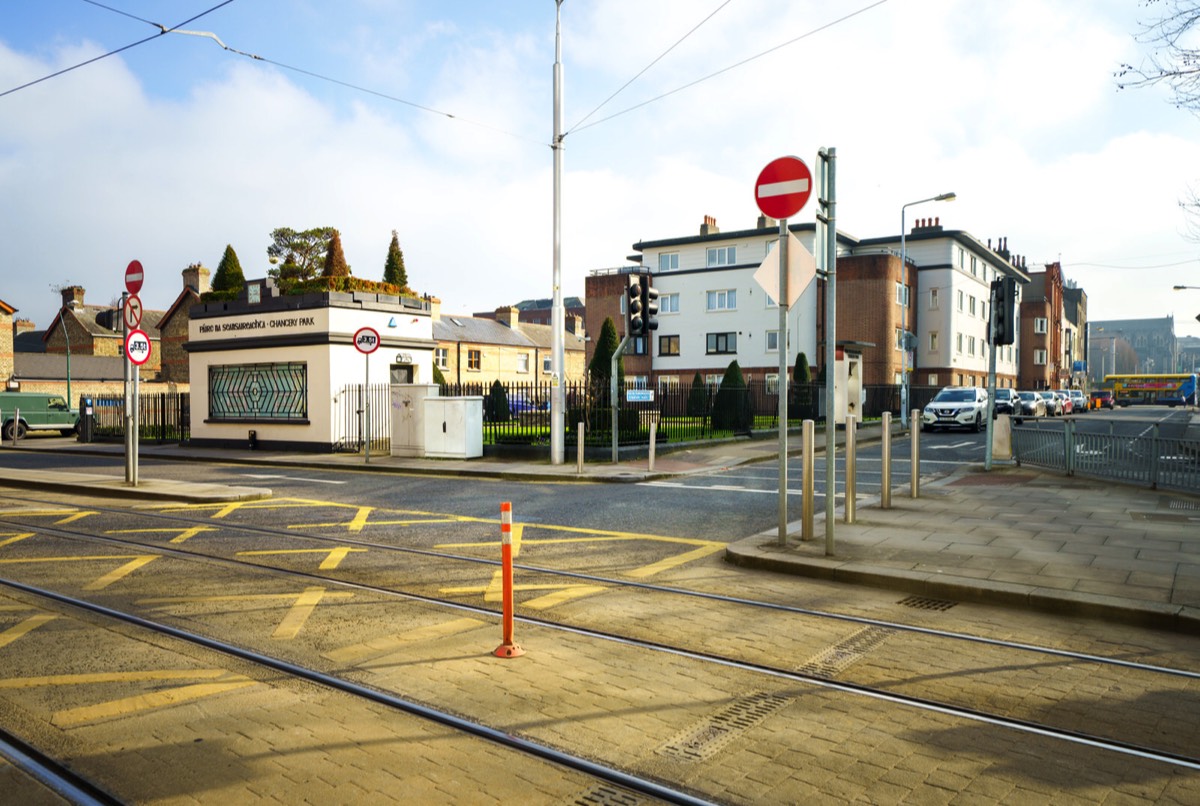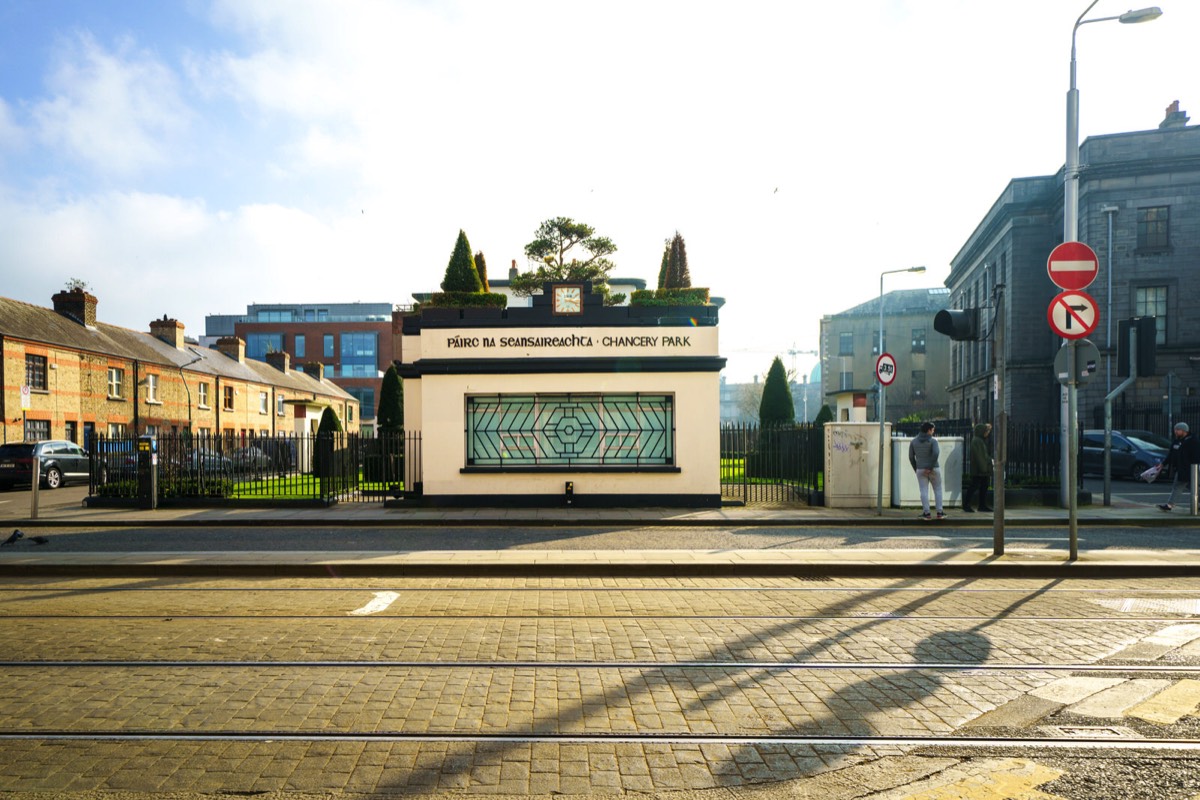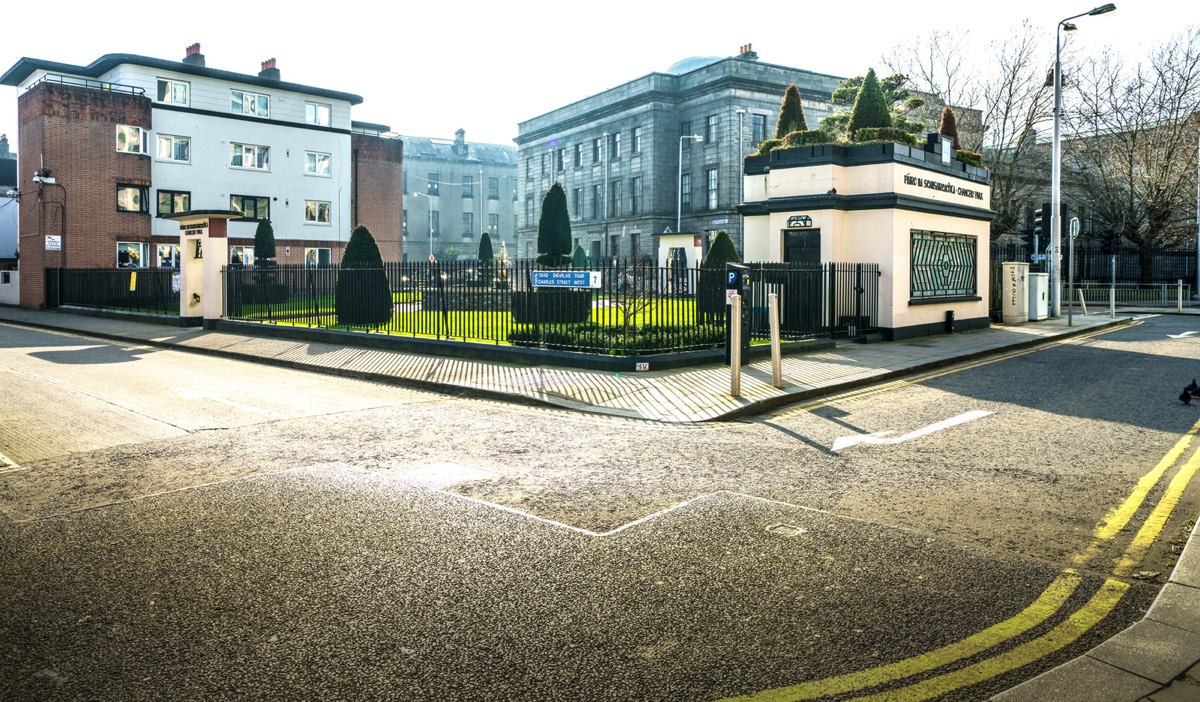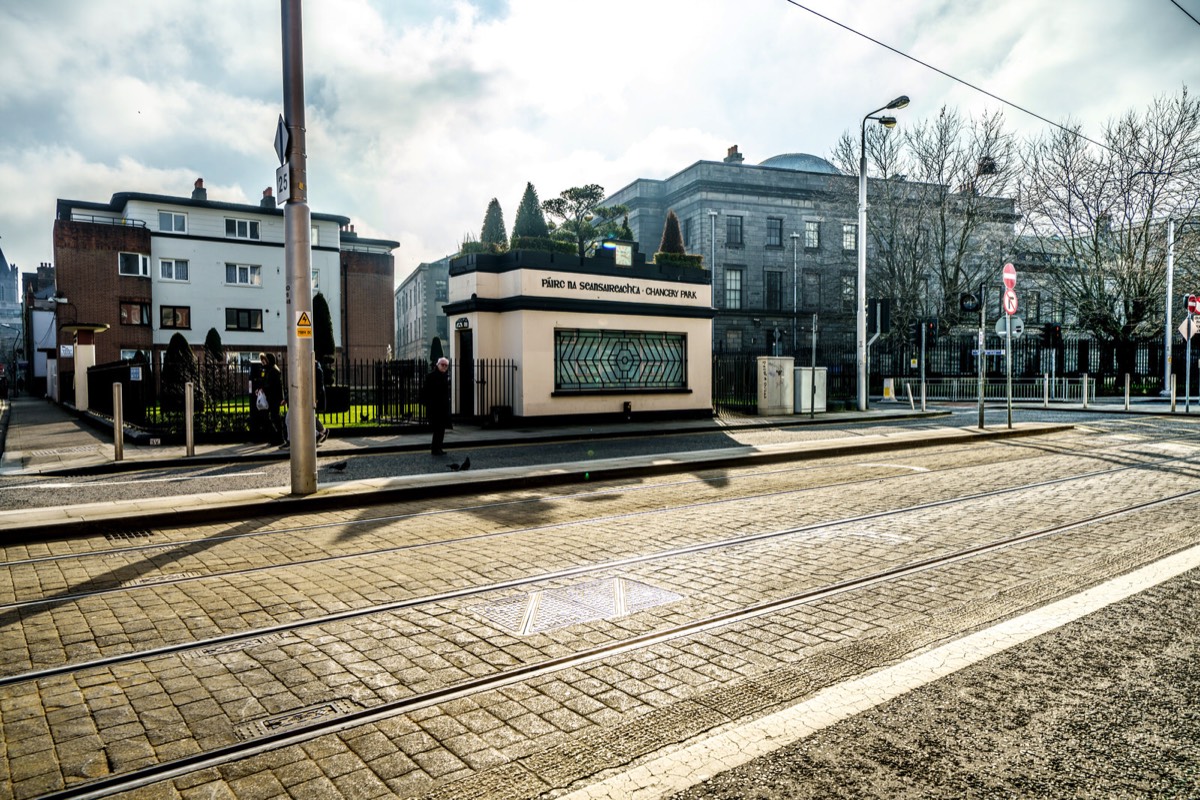CHANCERY HOUSE AND PARK
CHANCERY HOUSE, PARK AND KIOSK [DESIGNED BY HERBERT SIMMS]
"Designed by Herbert George Simms as part of the development of Chancery House housing scheme, this modest kiosk is built in the same style as the latter with Art Deco elements including a stepped parapet and geometric window railings. The contractor was G.& T. Crampton. The housing scheme was heavily influenced by what was happening in Amsterdam at the time, with many of the buildings having fine rounded corners and brick detail. These flats are unusual in that they have a mixture of rendered surfaces and brickwork. There is a small enclosed garden to the foreground for the residents at the perimeter of which stands the kiosk. The use of Gaelic script to the front of the kiosk provides artistic as well as contextual interest. The provision of a clock to the outer façade is both functional and decorative, and indicates the responsibility to the public which was assumed by the architect."
https://www.buildingsofireland.ie/buildings-search/building/50070270/chancery-house-chancery-street-chancery-place-dublin-7-dublin
In May 2018 Dublin City Council considered a report from city officials proposing that blocks of flats across Dublin’s city centre should be taken off the list of protected structures, and demolished to make way for “regeneration”.
Later the City Council made the following statement "Dublin City Council has not planned the demolition of any of the blocks designed by Herbert Simms (aside from those already being redeveloped as part of the Teresa’s Gardens regeneration programme) nor planned de-listing of these blocks and there is no current suggestion of changing this position."
Herbert George Simms (30 November 1898 – 28 September 1948) was an English architect who worked in the department of the Dublin City Architect Horace Tennyson O'Rourke.
During the First World War he served in the Royal Field Artillery. He was awarded an ex-service scholarship of £150 and tuition fees which allowed him to study architecture at Liverpool University. He began studies in October 1919 but had to abandon them for financial reasons when the three years ended. He had received the Certificate in Architecture in 1921 and passed the third and fourth years of the Diploma course. On grounds of previous office work and the standard of his studies he was permitted to sit the course for the Certificate in Civic Design which he was awarded in March 1923.
After university he moved to Dublin, where he worked for a while in the office of Aubrey Vincent O'Rourke. In February 1925 he was appointed temporary architect to Dublin Corporation, a role that was gradually extended and lasted until December 1927. In 1926 he was authorised to visit London, Liverpool and Manchester to examine the latest developments in flats.
In 1932 or 1933 a separate housing architect's department was formed to focus on the building of new houses and Simms was appointed to the new role of Corporation housing architect. He immediately recruited staff to work in the department. In the sixteen years he was in the post he was responsible for the construction of 17,000 residences, including both flats and houses.
His work on flats showed influences by Michel de Klerk, Jacobus Oud and Johannes van Hardeveld.
After Horace O'Rourke retired in 1945, the pressure on Simms increased. He had already suffered one nervous breakdown fifteen years before and on 28 September 1948 he took his own life by throwing himself under a train at Dún Laoghaire. A suicide note said that he felt overwork was threatening his sanity. He was buried in Deans Grange Cemetery.
"Designed by Herbert George Simms as part of the development of Chancery House housing scheme, this modest kiosk is built in the same style as the latter with Art Deco elements including a stepped parapet and geometric window railings. The contractor was G.& T. Crampton. The housing scheme was heavily influenced by what was happening in Amsterdam at the time, with many of the buildings having fine rounded corners and brick detail. These flats are unusual in that they have a mixture of rendered surfaces and brickwork. There is a small enclosed garden to the foreground for the residents at the perimeter of which stands the kiosk. The use of Gaelic script to the front of the kiosk provides artistic as well as contextual interest. The provision of a clock to the outer façade is both functional and decorative, and indicates the responsibility to the public which was assumed by the architect."
https://www.buildingsofireland.ie/buildings-search/building/50070270/chancery-house-chancery-street-chancery-place-dublin-7-dublin
In May 2018 Dublin City Council considered a report from city officials proposing that blocks of flats across Dublin’s city centre should be taken off the list of protected structures, and demolished to make way for “regeneration”.
Later the City Council made the following statement "Dublin City Council has not planned the demolition of any of the blocks designed by Herbert Simms (aside from those already being redeveloped as part of the Teresa’s Gardens regeneration programme) nor planned de-listing of these blocks and there is no current suggestion of changing this position."
Herbert George Simms (30 November 1898 – 28 September 1948) was an English architect who worked in the department of the Dublin City Architect Horace Tennyson O'Rourke.
During the First World War he served in the Royal Field Artillery. He was awarded an ex-service scholarship of £150 and tuition fees which allowed him to study architecture at Liverpool University. He began studies in October 1919 but had to abandon them for financial reasons when the three years ended. He had received the Certificate in Architecture in 1921 and passed the third and fourth years of the Diploma course. On grounds of previous office work and the standard of his studies he was permitted to sit the course for the Certificate in Civic Design which he was awarded in March 1923.
After university he moved to Dublin, where he worked for a while in the office of Aubrey Vincent O'Rourke. In February 1925 he was appointed temporary architect to Dublin Corporation, a role that was gradually extended and lasted until December 1927. In 1926 he was authorised to visit London, Liverpool and Manchester to examine the latest developments in flats.
In 1932 or 1933 a separate housing architect's department was formed to focus on the building of new houses and Simms was appointed to the new role of Corporation housing architect. He immediately recruited staff to work in the department. In the sixteen years he was in the post he was responsible for the construction of 17,000 residences, including both flats and houses.
His work on flats showed influences by Michel de Klerk, Jacobus Oud and Johannes van Hardeveld.
After Horace O'Rourke retired in 1945, the pressure on Simms increased. He had already suffered one nervous breakdown fifteen years before and on 28 September 1948 he took his own life by throwing himself under a train at Dún Laoghaire. A suicide note said that he felt overwork was threatening his sanity. He was buried in Deans Grange Cemetery.




You will find links to buy products from Amazon, Google and other partners. If you click on these links, you’ll find that the URL includes a small extra piece of text which identifies that the click came from my websites. This text is an affiliate code, and it means that I get a small percentage of the money you spend if you choose to buy that product, or, in some cases, other products from the site soon after. These affiliate links help pay the costs of producing my websites and ensure that the content is free to you.
COPYRIGHT INFORMATION BELOW APPLIES ONLY TO PHOTOGRAPHS

This work by William Murphy aka Infomatique is licensed under a Creative Commons Attribution-NonCommercial-ShareAlike 4.0 International License.
Permissions beyond the scope of this license may be available at https://excellentstreetimages.com/in-the-year-twentytwenty/copyright/.
